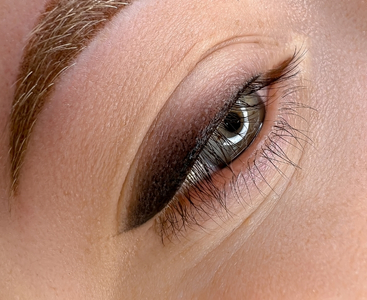ORTHOGNATHIC SURGERY
Orthognathic Surgery
Orthognathic surgery is the surgery used to bring the lower and upper jaws to a suitable position in adults. The proper structure of the lower and upper jaws is very important both visually and functionally. A healthy jaw structure; Proper bite alignment plays an important role in speech, easy breathing, and facial symmetry.
If congenital or later-developing problems in the jaw structure are not treated correctly, the alignment of the jaw may be distorted. This may lead to various functional and aesthetic problems.
What is Orthognathic Surgery?
Orthognathic surgery is the clinical term for corrective jaw surgery. It includes the procedures applied to bring the bones of the upper or lower jaws into proper alignment. The purpose of these surgeries is to properly align the upper and lower jaws with each other. To achieve this, the jaws; moves up or down, in or out. These operations correct the alignment of the lower and upper jaws with each other. In this way, their capacity to work and adapt to each other is brought to a healthy level.
Problems with the jaw; It can cause difficulties in speaking, eating, swallowing, breathing and sleeping. Stand back or a protruding chin can distort the face shape, causing an unbalanced appearance both from the front and from the side profile. In some cases, jaw problems can be the source of excruciating headaches or other health problems, such as sleep apnea. A severe bite problem may occur in individuals; it may become impossible to properly close the teeth or lips.
In many cases, corrective jaw surgery may be required in children. A type of jaw surgery known as mandibular distraction may be required for babies with Pierre Robin Sequence to relieve airway obstruction and prevent the need for a tracheostomy. Corrective (orthognathic) chin surgery may be required in children with cleft lip and palate.
Adult patients with overbite, underbite (progression of the lower jaw), or crossbite (crossbite) may require orthognathic surgery when the teeth cannot be properly aligned with orthodontic care alone. In addition, chin surgery can be applied for severe obstructive sleep apnea in some individuals.
Can Orthognathic Surgery Correct Bite Irregularities and Facial Imbalance?
These problems are the two most important main reasons behind the need for these surgeries. Misaligned bite problems reveal facial instability. The majority of patients use orthodontics both before and after surgery. Before surgery, orthodontics will align the teeth in each jaw independently. After the jaws have been surgically repositioned, another round of orthodontics enables optimal alignment of the teeth. At this stage of the treatment process, we act together with orthodontists. After surgery and orthodontics are completed, the patient will have a perfectly aligned bite.
When Is Orthognathic Surgery Necessary?
The incompatibility between the lower and upper jaw is usually quite pronounced. Other problems that this alignment problem affects negatively affect the lives of our patients. Orthognathic surgery is a treatment method used for the other problems we have mentioned below:
- Conditions that make biting and chewing difficult
- problems with swallowing
- Difficulty speaking freely
- Lack of correct bite fit or jaw closing problems
- Facial imbalances such as small jaws, problems in the lower jaw, over-closures and crossbites
- The problem of inability to close the lips easily
- temporomandibular joint disorders caused by a misaligned bite
- Problems caused by injury or birth defects
- Misalignment leading to obstructive sleep apnea
What are the Examinations to Be Done Before Orthognathic Surgery?
- X-ray Lateral Cephalogram: It is the process of taking an x-ray of the facial bones, showing the profile view of the patient. This procedure helps evaluate deformity in bone and soft tissue.
- CT Scan, Virtual Surgical Planning, Splints and 3D Models: CT scans of facial bones are taken. Afterwards, surgical planning is performed with special software that helps the surgeon to plan the actual incisions and movements on the bone.
- Speech assessment: Moving the jawbones can affect speech. Therefore, speech evaluation prior to surgery will help optimize the outcome.
- Routine blood tests before anesthesia are also among the tests that should be done before orthognathic surgery.
What Are the Risks of Maxillofacial Surgery?
Orthognathic surgical applications have risks such as infection, blood loss and possible reactions to anesthesia that can be seen in every surgery.
The risks specific to chin surgery are:
- jaw fracture
- Return of the jaw to its previous state
- Problems with bite compliance
- jaw joint pain
- Need for additional surgery
- The need for root canal treatment in traumatized teeth
- nerve damage
- periodontal problems
All these risks are rare cases if the surgery is performed by an experienced and expert surgeon. For more detailed information about Izmir orthognathic surgery, you can contact us and Prof. Dr. You can make an appointment with Cenk Demirdöver.
What is the Recovery Process After Jaw Surgery?
Orthognathic surgery is the process of intervening in the jaw bones. Therefore, it is normal to have certain restrictions on jaw movements after surgery.
After the operation, a diet consisting entirely of soft meals is applied for a while. Although it varies depending on the type and difficulty of the surgery, liquid nutrition is usually the first 3 weeks. In addition, strenuous exercises or strenuous activities such as weight lifting should be avoided during the recovery period.
Complete recovery takes up to 12 weeks, although it varies from patient to patient. After the healing process, an orthodontist should be consulted and your teeth should be aligned.
It is possible to switch to a soft chew diet after about 6 weeks. In this diet, soft foods are consumed by cutting them into small pieces. It is necessary to avoid pizza, apples, hard meats and similar foods until at least 3 months after your surgery.










